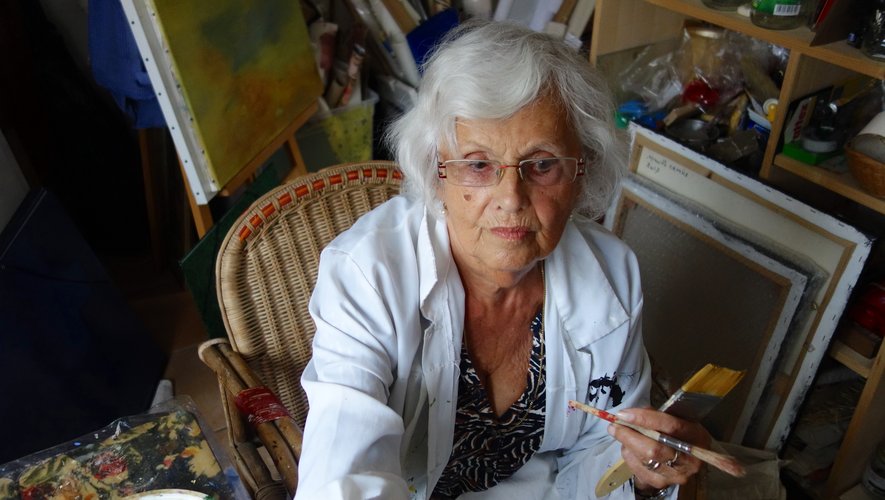Drawn since her earliest youth towards the plastic arts, Mireille Camus has long exercised her talents in a little atelier on the Place Rossetti, in the historical centre of Old Nice. At that time, her creative imagination found expression in the manufacture of art objects, as well as craft products and clothes, taking as her starting point the reclamation and repurposing of all sorts of materials — rags, papers, rope, earth, sand or stones — worked together sometimes, in the spirit of Arte povera, by macramé or by weaving, as well as with watercolour, batik, or silk-painting.

Since the 1990s, when she left Nice for her native Charante-Maritime, she has devoted herself entirely to painting. Driven on by a process of sustained research, she explores techniques, surfaces, forms and colours with great liberty and remarkable inventiveness. Her register is essentially but not exclusively abstract.
The painting of Mireille Camus is not erudite, not inspired by a school or a contribution to an œuvre; it’s a direct and true painting, that comes not from the heart but from the entrails. Her work isn’t dreamy but troublesome, it poses questions, draws us into strange worlds, into depths illuminated by mysterious gleamings. Looking at her canvasses is a real joy: one is never finished probing them, seeking out in them new discoveries. All of a sudden, you notice a subtle detail, a form or a colour: here a certain Indanthrone blue, there a Venetian matte red which, thanks to a shift in the intensity of the daylight, reveals itself, takes on a new distinctness, a singular, unexpected force — and lays claim to our attention.
Mireille lives each of her canvasses as an adventure; and the intensity of these adventures has become greater and greater as she’s grown in experience. She herself says: “I never know where the painting will carry me when I get started on it. I spread some colour onto the canvas and if, after a certain point, this colour calls forth more explicit forms, I can trace out some lines, accentuate the shadows, and perhaps these shadows will prompt me to figure silhouettes or houses, ports, crowds, or waterfalls, tree-trunks, factories or ships. But it may just as well happen that the colour applied at the beginning could develop its richness by association with other nuances, of the same tone or contrasting, without it having been necessary to introduce a figurative element onto the canvas.”
Painting is an art which makes demands on the body and on the senses. Mireille Camus takes the time to immerse herself in the textures, to appreciate their finesse, their suppleness, their roughness; the time to spread with the flat of her hand the plaster between two canvasses in order to make impressions; to mix, or to juxtapose, rare substances or colours; to observe attentively how the paper or the canvas react to the materials which one applies to them. She takes pleasure in running a knife’s blade over the medium in order to transform the material; she gladly inhales the smell of binder, of paint, or of solvents; then she chooses by touch the materials which will enrich the canvas. She carries out all these gestures as so many rites, each able to inspire her imagination directly, without any restrictive preconception, without a too-burdensome worry about “meaning”, about aesthetics, and even about technique… It’s as if there were established between the œuvre and the artist an exclusive interdependence, without a care for the gaze that enthusiasts will later direct towards the final result.
Following the example of the artisan, what Mireille Camus undertakes is the manufacture of an ensemble that’s — not pretty, a category that doesn’t enter into her work when it’s underway — but coherent, harmonious, and powerful. Materials, colours, and medium must find a way to exist together which produces in the painter, at the completion of the work, a minimal sense of accomplishment — that is, enough accomplishment to live on — at which point the work can be considered done.
At which point, the ambition of Mireille Camus is that the completed work should find, along some path unknown to its creator, a way to resonate with the intimate depths of some onlooker – depths perhaps not only intimate but unknown.
